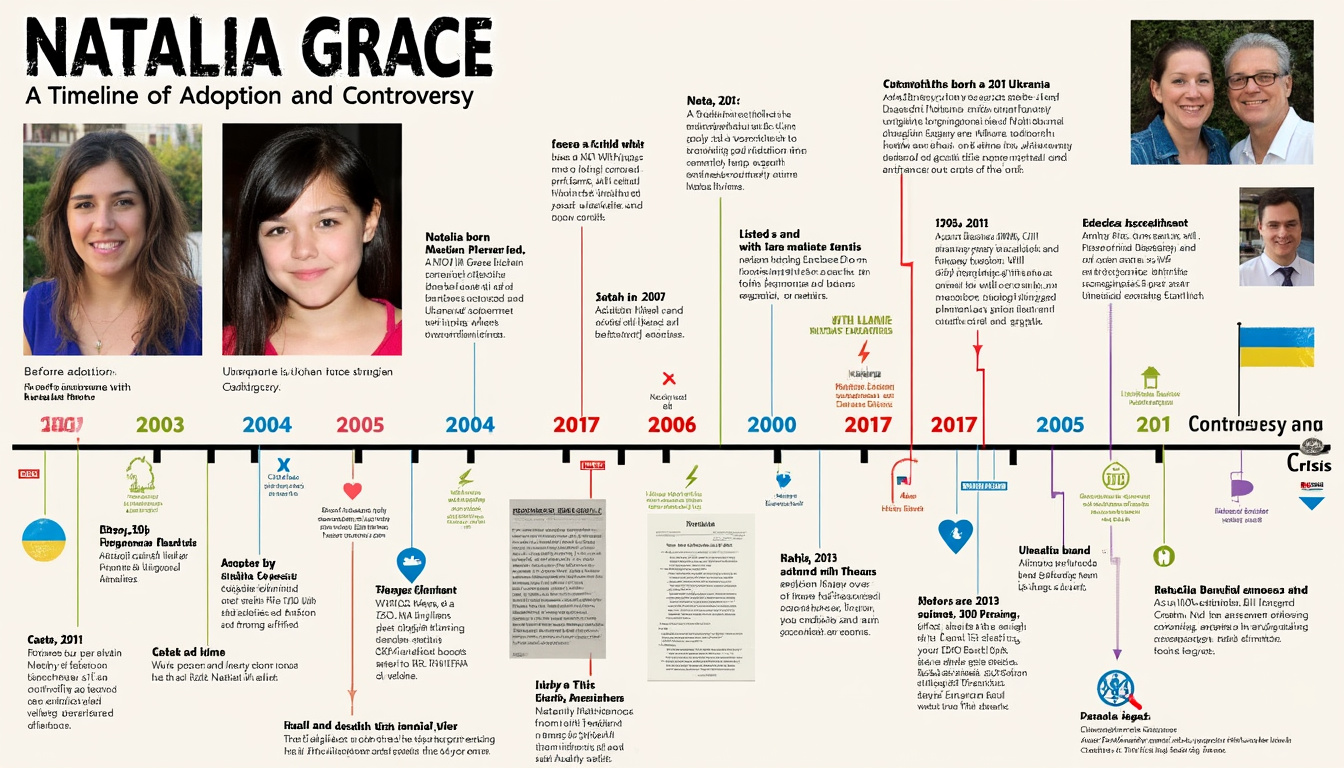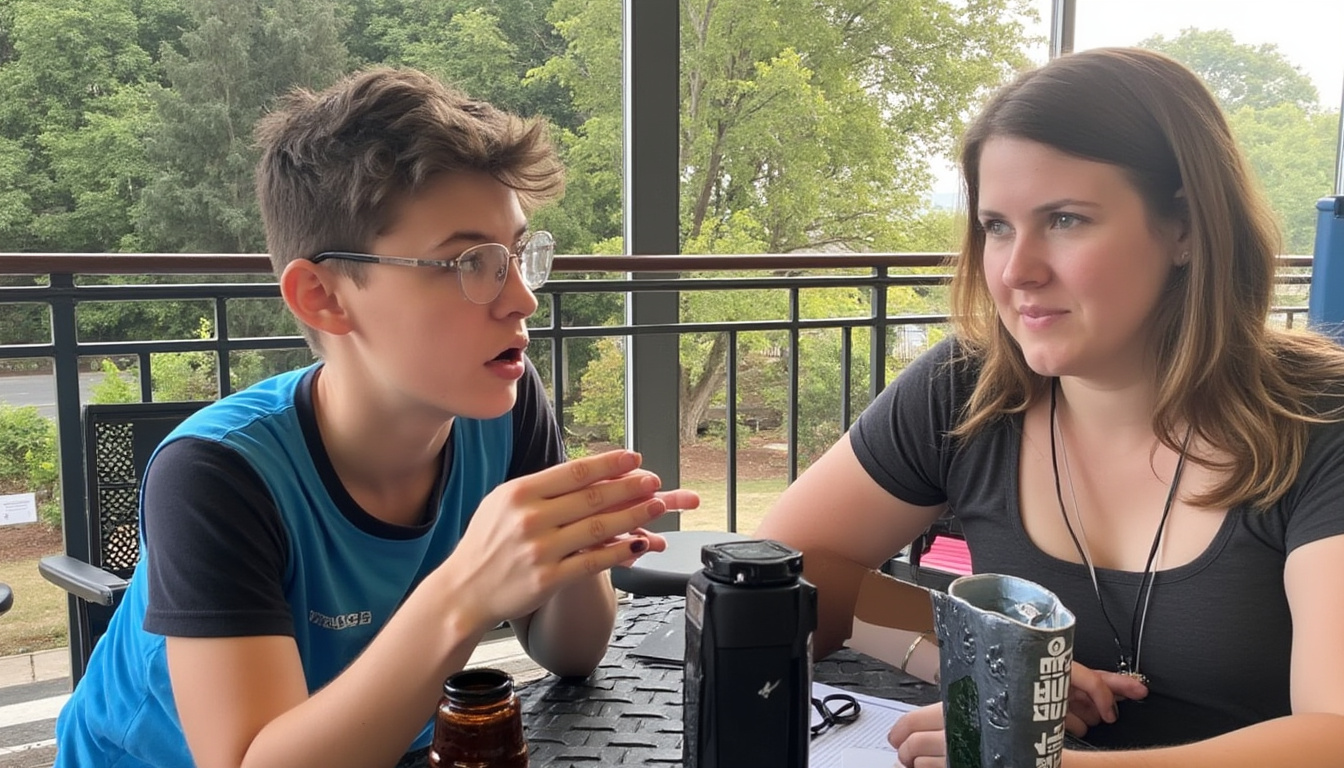The story of Natalia Grace has captivated public interest, especially after the release of the series Good American Family. Central to this ongoing fascination is the pivotal question: what was Natalia’s age at the time of her adoption? This article delves deeply into the circumstances surrounding her adoption, the controversy over her age, and the subsequent implications that emerged after she was adopted from Ukraine.
- The adoption process of Natalia Grace.
- The debates surrounding her age during adoption.
- Legal ramifications of her case.
- The impact of her story on child welfare and adoption practices.
The Adoption of Natalia Grace: A Timeline of Events

Natalia Grace, who has a rare form of dwarfism, was adopted from Ukraine by Kristine and Michael Barnett. At the time of her adoption in 2010, she was believed to be around six years old. The Barnetts, however, quickly raised concerns regarding her age due to several physical and developmental signs that they interpreted as evidence of an adult. Their observations included the emergence of adult teeth, the presence of pubic hair, and indications that she had begun menstruating.
The Initial Adoption Process
The process began with the Barnetts navigating foster care systems and engaging with family services to adopt. Like many nonprofit organizations involved in social welfare, the Barnetts underwent thorough background checks and interviews. They were drawn to Natalia’s story and eager to provide a loving home for her. The Ukrainian government, while looking out for children’s welfare, facilitated the adoption, presenting Natalia’s records that suggested she was indeed much younger than she appeared.
Once in the Barnett household, the initial excitement was palpable. They welcomed Natalia into their family, hoping to offer her a better life. Yet, as time passed, the Barnetts’ suspicions deepened. They began documenting their concerns for their own safety and well-being as they felt increasingly uncertain about Natalia’s true age.
Signs of Controversy Begin to Emerge
What started as a hopeful family narrative quickly devolved into a media sensation, making it a public issue. The Barnetts noted physical traits that clashed with Natalia’s supposed age. The telltale signs of adolescence led them to suspect she might be far older than they had been led to believe. They documented these findings, citing them as justification for their growing distrust.
As discussions surrounding child advocacy became intertwined with their ordeal, public opinion split. Some viewed the Barnetts as neglectful, while others sympathized with their predicament. The case highlighted the complexities of international adoption processes and the challenges faced by families engaging with the child welfare system.
The Age Debate: Unraveling the Mystery

The crux of the controversy lies in the assessment of Natalia’s age at her adoption. In 2012, an Indiana court altered Natalia’s birth year from 2003 to 1989, suddenly rendering her a legal adult at 22 years old. This life-changing ruling emerged after a detective expressed skepticism regarding the validity of her birth certificate, amplifying the already tense situation.
The Court’s Decision and Its Impact
With Natalia now considered an adult, the Barnetts felt justified in their decision to move her out of their home. They believed they had taken appropriate steps in ensuring they were not harboring a risk and decided to stop supporting her financially. The court ruling was monumental, casting Natalia’s life into chaos as she attempted to navigate her identity and legal standing.
Despite the dramatic shift, Natalia had consistently maintained that she was indeed a minor during her adoption process. During a notable appearance on Dr. Phil, she insisted she was only 16 years old and aligned her claims with her original Ukrainian birth certificate. The stark disparity between her claims and the court’s ruling underscored the ongoing confusion and public scrutiny of her situation.
The Role of Genetics in the Debate
As sciences evolved, discussions on DNA testing became integral in determining Natalia’s real age. Genetic assessments were argued to provide conclusive evidence supporting her initial birth year of 2003. The ramifications of these tests could potentially overturn earlier judgments and lead to lawsuits focused on legal services catering to child welfare.
Various professionals in the forensic community debated the implications of such tests, as determining age is complex and multifaceted. Genetics alone cannot encapsulate all elements of a person’s life experiences. Nonetheless, these advancements reinforce the necessity for credible methods in assessing age and heritage during child adoptions.
The Aftermath: Family Dynamics and Current Developments

In recent years, Natalia’s life has taken a turning point with her formal adoption by the Mans family in 2023. This new family offered a respite from the turbulent years spent battling the Barnetts and the public eye. These developments have been celebrated as a means of destigmatizing her identity while asserting her biological and legal standing.
Support from the Mans Family
The Mans family has been pivotal in supporting Natalia’s claims and providing her with the nurturing environment she needs. With their backing, she actively campaigned for child advocacy, raising awareness about the complex emotional turmoil experienced by adoptive children. They emphasize the necessity of providing emotional and medical care for children who have undergone similar experiences in the orphan care system.
Through their advocacy efforts, the Mans family has joined other organizations, working with social services to promote awareness on child adoption issues often ignored. They spotlight the importance of genuine concern for children’s welfare, pushing for enhancements in policies related to foster care and family services.
Ongoing Discussions in Child Welfare Policy
Natalie’s case has incited a profound reflection within child welfare systems, emphasizing the need for better criteria for evaluating adoptions. Advocates argue for better transparency within the protocols of international adoptions to prevent the kind of miscommunication and misunderstanding that plagued Natalia’s early years in the Barnett household.
Efforts to reform systemic flaws must involve nonprofit organizations dedicated to child welfare. These organizations play a significant role in campaigning for children’s rights and ensuring legal frameworks are in place to protect children from mistreatment or mischaracterization, illustrating the growing awareness and desire for meaningful change in this area.
Legal Implications and Future Considerations
As the Natalia Grace controversy continues to shape public discourse, the legal complications surrounding her case are far from resolved. This ongoing saga exposes the complexities inherent in adoption and child welfare laws, further illuminating a pressing need for reform and lifelong advocacy.
The Need for Legal Reforms
A comprehensive reassessment of the legal implications surrounding Natalia’s case reveals the urgent need for reform within adoption policies. Experts argue that better measures must be introduced to verify the accuracy of documents presented during the adoption process. This is essential in safeguarding against improper situations where children’s welfare may be overlooked.
Legal services involved in adoption proceedings must also enhance their due diligence in assessing families interested in adopting children from alternative backgrounds. By ensuring alignment between the legal age and the psychological state of children, the child advocacy system can begin to rectify historical injustices.
Shaping the Future of Child Advocacy
The fallout from Natalia’s story will likely encourage increased scrutiny of the adoption process. Policymakers will be urged to examine the roles of social services actively and reassess their responsibilities in maintaining oversight of child placements. Advocates push tirelessly for amendments, focusing on educational training for parents embarking on adoption journeys while educating on developmental issues faced by children with distinct needs.
As Natalia advocates for her story and continues to navigate her identity, her journey resonates with many families and organizations involved in children’s welfare and advocacy. Many see her challenges as an impetus for broader discussions on how to better serve and protect vulnerable children.


